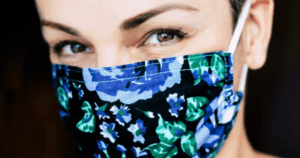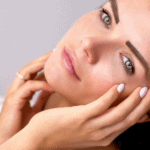The Maskne Problem: How to Get Rid of and Treat Mask Acne

Wearing a mask is essential to keeping yourself and others safe during the COVID-19 pandemic. Masks help to trap particles released from your mouth and nose to reduce the risk of spreading the virus to others. However, as many people have come to realize, wearing a mask regularly may have a side effect on your skin: acne.
Mask acne, dubbed “maskne,” is a common problem many Americans are facing right now. But why exactly is it happening and what can you do to clear up your skin while staying protected against COVID-19?
What causes mask acne?
When you wear your mask, you’re not just trapping the particles from your mouth and nose. You’re also trapping moisture, oil, sweat, and dirt close to your skin. Because the skin on your face is thinner and more sensitive than elsewhere on your body, and because facial skin has a higher density of hair follicles, skin covered by your mask may become inflamed and red. Occlusion can lead to formation of pustules, papules, blackheads and whiteheads. Additionally, when we breathe and talk with our masks on, it increases the amount of moisture in the covered area, which may change the skin’s natural pH level.
Certain habits such as touching your mask to adjust it can also increase your risk of acne as well as your risk for COVID-19. Due to the novel coronavirus, it is not recommended to touch your face in public, especially your mucous membranes and eyes. When you touch your face, you could be leaving behind dirt, bacteria, viruses and other irritants on your skin.
How can I avoid blemishes while staying protected?
Of course, acne is no reason not to wear a mask. It’s better to have a breakout than to put yourself and others at risk for COVID-19. But that doesn’t mean you have to live with your maskne, either. There are several ways you can fight back against your blemishes:
- Change your skin care routine: A mask-friendly skin care routine is essentially the same as a summer skin care routine. Because you’re dealing with excess moisture and sweat from your mask, you want to be sure to clear it away with a gentle, soap-free cleanser and a light moisturizer. Only uncovered skin requires moisturizers with an SPF 30 or higher.
- Wear the right type of mask: Certain types of masks, like those made of polyester, aren’t breathable and can leave you with clogged pores and ineffective protection against COVID-19. According to the CDC, the material of your mask ought to be tightly woven and 100% cotton, with a thread count of above 180, and at least 2 layers. Cotton is breathable and gentle on the skin while still trapping the particles from your mouth and nose to protect those around you.
- Reach out to a local dermatologist: If your breakouts don’t get any better after changing your skin care routine and mask type, it’s best to reach out to a board-certified dermatologist. Dermatologists can help you find the best possible solution for your unique skin type.
Looking for a local dermatology clinic? You’re not alone. About 50 million people in the U.S. are affected by acne each year, even without masks making us break out. Fortunately, the highly trained, board-certified dermatologists at Mahoney Dermatology Specialists can help. For more information or to schedule an appointment with us, contact Mahoney Dermatology today!

 Previous Post
Previous Post Next Post
Next Post